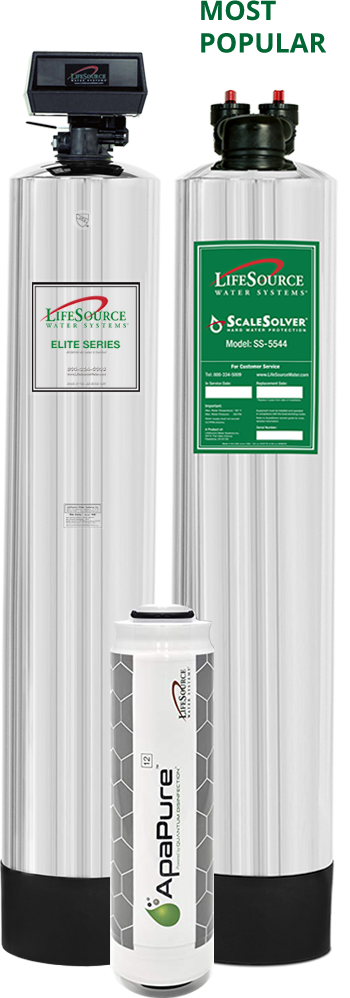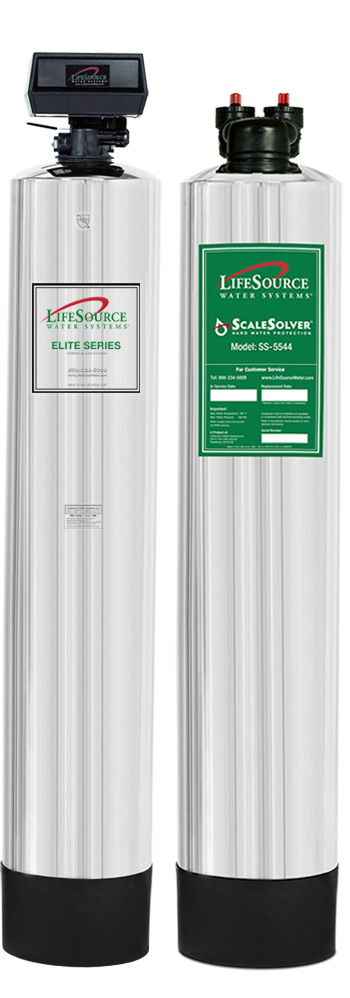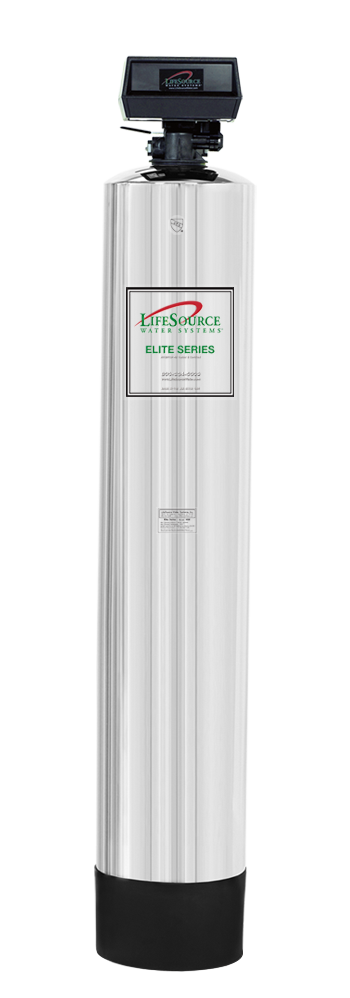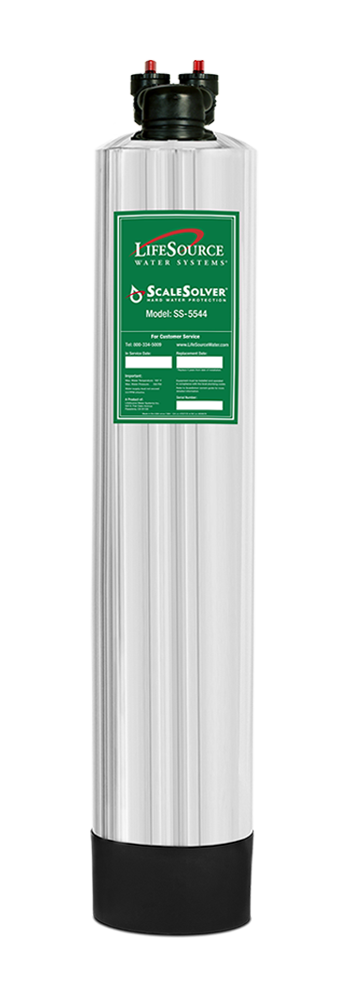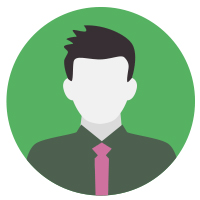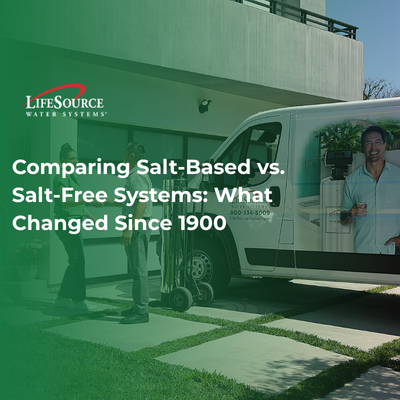
Salt-Free vs. Salt-Based Water Softeners: Which is Better for Your Home?
Quick Answer (What most homes need):
For most homes—especially on municipal water—a salt-free system is the better fit. When comparing salt-free vs salt-based water softeners, salt-based units remove hardness with ion exchange but add sodium and discharge salty brine; salt-free systems condition water without salt, reducing scale while keeping beneficial minerals and avoiding environmental impact. If you have extremely hard well water or a niche need for full ion-exchange softening, a salt-based unit may still make sense.
Let’s break down how each option works, how much you’ll really spend, and why more homeowners are switching to saltless water softener systems like LifeSource for long-term savings and peace of mind.
How Do Salt-Free and Salt-Based Softeners Work?
Salt-based water softeners remove minerals (primarily calcium and magnesium) through a process called ion exchange, replacing them with sodium. This can help with scaling but comes with downsides: you’ll need to buy and load salt regularly, and the system produces brine discharge that often requires backwashing and water waste.
Salt-free softeners, by contrast, don’t remove healthy minerals. Instead, they condition them, altering their structure so they won’t stick to pipes, faucets, or appliances. LifeSource uses Template Assisted Crystallization (TAC) to prevent hard water scale, without stripping your water of its healthy minerals.
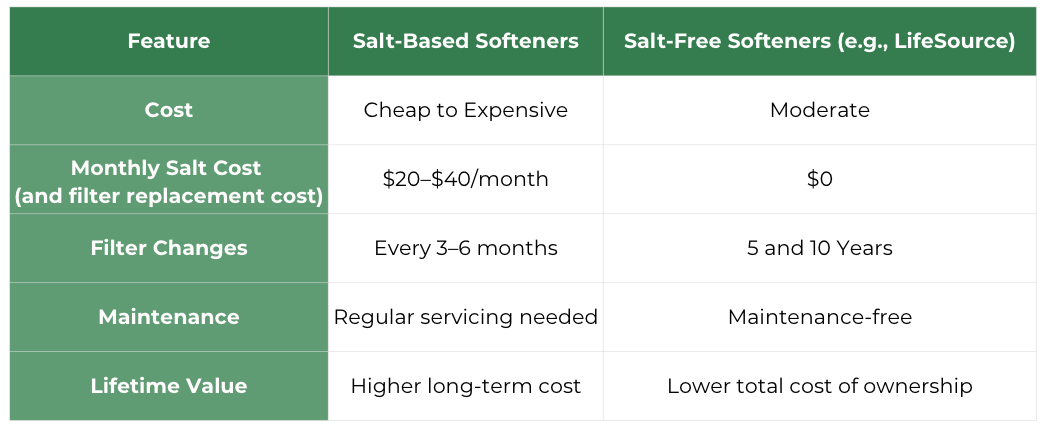
Environmental Impact & Local Restrictions
Salt-based systems don’t just cost you, they also impact the environment. The brine discharge from ion exchange systems can harm local water tables and soil quality, which is why some cities and states have started banning salt-based softeners altogether.
- Salt-free conditioners like LifeSource:
- Use no salt or chemicals.
- Produce zero wastewater.
Retain beneficial minerals like calcium and magnesium and potassium.
They’re better for your body, your plumbing, and the planet.
External Resource: USGS – Hardness of Water Map
Long-Term Value: Which System Saves More?
Beyond installation and monthly costs, consider this:
- Salt-based softeners increase your water bill due to backwashing and regeneration.
- Frequent salt purchases, service calls, and filter changes add up.
- Soft water from salt systems feels slippery and isn’t ideal for drinking, meaning you may need a reverse osmosis system too.
LifeSource’s best salt free water conditioner eliminates all of that. It protects your appliances, prevents scale, and delivers clean, drinkable water from every tap, with zero ongoing cost or effort.
Related Resource: The Truth About Hard Water
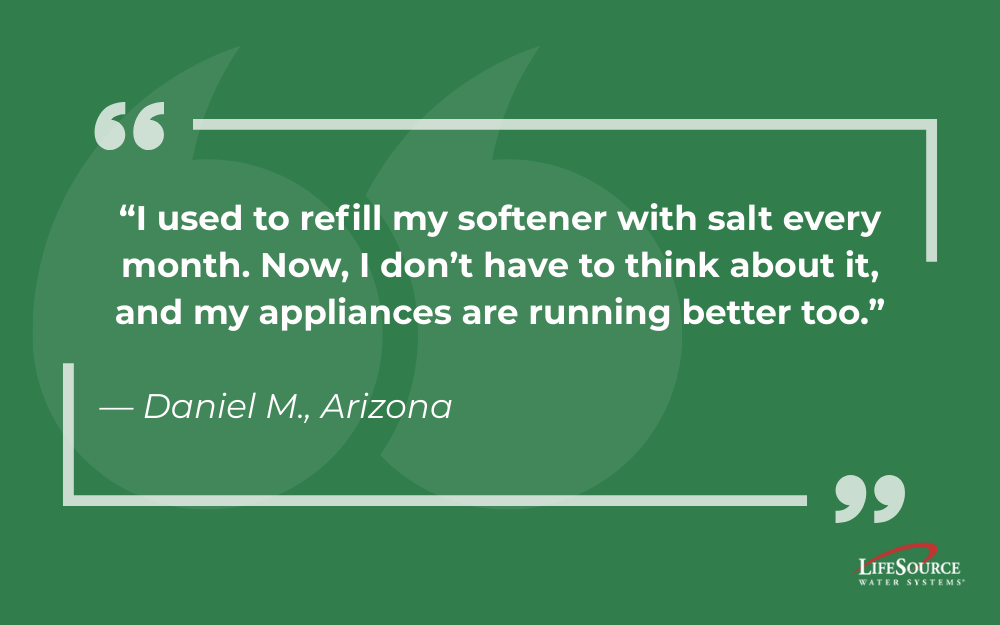
Request a free consultation and quote today
FAQs
Is a salt-free system a true water softener?
Technically, salt-free systems are conditioners. They don’t remove calcium/magnesium; they change their form so hardness minerals don’t stick and form scale. That’s why you keep healthy minerals but reduce buildup.
Will I still see water spots with a salt-free conditioner?
You may still see some spotting (minerals remain), but spots wipe off easier and scale on fixtures/appliances is greatly reduced.
Does salt-free conditioning reduce TDS?
No. Total dissolved solids remain similar. For drinking taste preferences, pair with whole house filtration; RO is optional.
Are salt-based softeners banned where I live?
Some communities restrict or discourage brine discharge systems. Check local rules or ask our team; we’ll help you confirm.
Is TAC safe for drinking water?
Yes—TAC media conditions hardness minerals without adding salt and is widely used for scale prevention in potable water.

